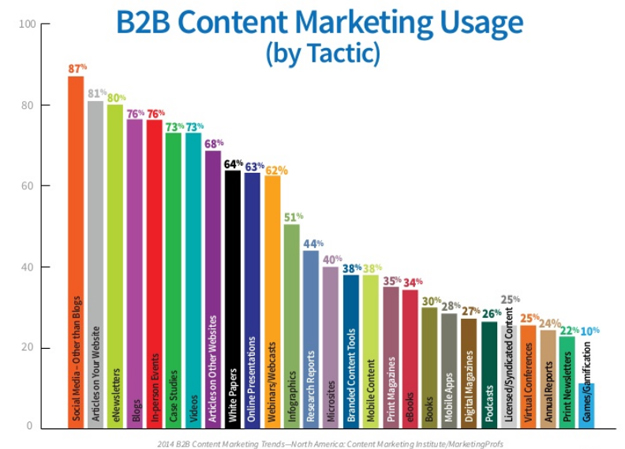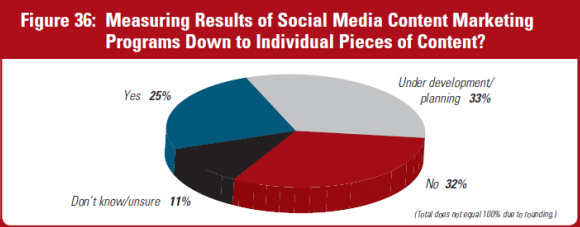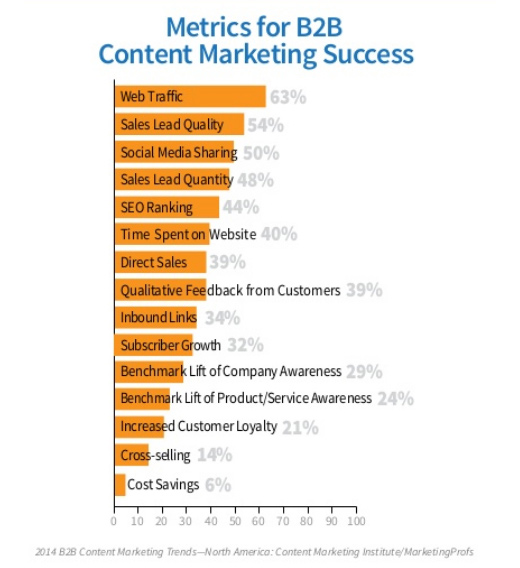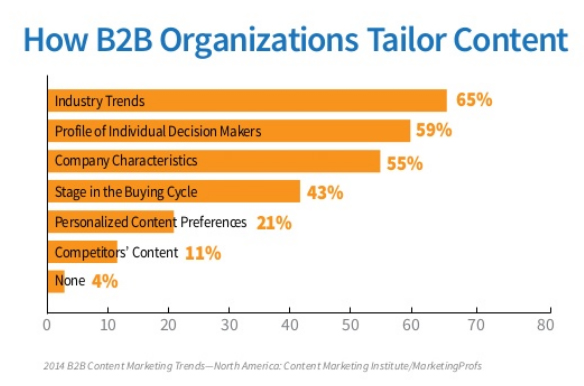Can native advertising help brands overcome 'Banner Blindness'?
Tags:
  A doctoral student in Texas diagnosed a new ailment in 1999; a new quirk of the human condition. Jan Benway set up a series of usability experiments at Rice University in Houston to explore how people deciphered information on webpages. She set her test subjects simple tasks: find a book about preparing for the SAT, find information about coaching youth basketball.
A doctoral student in Texas diagnosed a new ailment in 1999; a new quirk of the human condition. Jan Benway set up a series of usability experiments at Rice University in Houston to explore how people deciphered information on webpages. She set her test subjects simple tasks: find a book about preparing for the SAT, find information about coaching youth basketball.
Navigation to what they were asked to find came in a variety of formats, from plain text links to menus to banners, and the test subjects were timed to see how long it took them to complete the task.
Benway's discovery was "banner blindness".
Design something visually striking, place it at the top of a webpage, demand users' attention, and there is every chance it will be ignored.
Benway's research came just five years after Hotwired magazine sold the first banner ad to AT&T in a move that appeared to signal a new and lucrative revenue stream online for publishers – and a new way to measure the effectiveness of ad spend.
While her findings cast doubt over the effectiveness of online display, they in no way slowed its growth.
Figures from the Internet Advertising Bureau (IAB) and PwC published in October put online display spending at £738m in the UK in the first half of 2013 – an increase of 23% on the same period last year.
However, concerns remain about "banner blindness". Research last month by Dave Chaffey of Smart Insights revealed the click-through rates for different types of display ads in different territories.
"Display ads only gain around one click every 1,000 impressions. Shocking! It seems that banner blindness is alive and kicking," Chaffey reported.
He suggested that measuring "interactions" – users who expanded an ad, hovered over it for more than one second or viewed it in full screen mode – would show an "interaction rate" of about 2%.
Of course, ads have evolved. There's animation. There's interactivity. Echoing Chaffey's point about interactions with ads, there's a broader argument that display contributes to brand awareness whether or not a user clicks.
Most importantly, paid search and re-marketing ads speak directly to what people have been looking for online and target user intent. It's easy to see why search ads accounted for about 60% of the £3.04bn total online advertising spend in the first half of this year, according to the IAB and PwC research.
But the rise of content marketing poses publishers with a different problem. Brand storytelling often doesn't fit in a box in the margins of a webpage.
Smart brands are looking for ways to be useful to customers; to engage them with brand content they want to share.
They aren't looking to produce advertorial that masquerades as editorial – the old print trick of using similar fonts and laying out copy like a news story.
They are looking to produce content with editorial integrity.
Call it native advertising if you must. I see it as brands showing that good stories earn attention.
Good stories tell you something you don't already know that's worth knowing.
A good story can surprise, delight, shock or frustrate. It can be entertaining or illuminating; sometimes both. It's not just journalists who can do that.
Meredith Kopit Levien, executive vice president advertising for the New York Times, has revealed that a "branded content" advertising unit will form part of the company's website redesign, which is due to go live early next year.
"We believe that marketers have stories to tell and they're looking for atomised ways to tell those stories and ways to amplify their messages," Kopit Levien told Ad Age. She's right.
Nonetheless, many editors and publishers see it as a worrying development. "The clear delineation between news and advertising is becoming more and more blurred. We have to resist that," Gerard Baker, the editor of the Wall Street Journal, told New York University's journalism school earlier this year.
For my part, I sign up to the line often attributed to George Orwell: "Journalism is printing what someone else does not want printed: everything else is public relations."
So I'd ask any editor, how much of what your reporters have produced today is something that someone else does not want published?
There's always the Media Standard Trust's churnalism tool to help check if there's any doubt about the answer. It's not criticism: just a plea for pragmatism and engagement from editors to find alternative ways to help brands tell their stories.
So, 14 years after her PhD thesis, where is Jan Benway now?
After spells at Sun Microsystems and Intuit designing tools for software development and small business accounting, she now works at a life sciences software company called Ingenuity Systems making web-based software tools for microbiologists and geneticists.
Does she still think her findings about banner blindness hold true?
"Yes, I still think there would be the same response in users today, though the breadth of graphic design available to designers today has increased dramatically since the late 90s," Benway said.
"There are many more tools available to designers now, to incorporate attention-getting elements. On the other hand, the users themselves have changed. In many ways, they are more savvy, but in other ways less so, since most web users in the 90s were early adopters.Â
"Simply, users are focused on their own goals, and those goals are rarely aligned with the goals of advertisers. They learn quickly where to look and focus their attention on the information that is critical to them."
A 'branded content' advertising unit will form part of the New York Times’ website redesign. Photograph: Sipa Press/Rex Features
Paul Hill is content director at Further. You can follow him on Twitter@paulhill_biz
The Future Of Content Marketing: Trends and Predictions for 2014
Tags:According to a 2012 study by AOL and Nielsen, 27,000,000 pieces of content are shared every day. By now, the mantra of “content is king†has been relentlessly drilled into our collective heads – but more isn’t always necessarily better.
Quality is important – but how do you know if you’re really producing content that’s engaging your audience? Perhaps even more importantly, how are you measuring the results?
If you write and share it – will they come?
Let’s take a look at several new findings made as a result of a joint study between the Content Marketing Institute, MarketingProfs and Brightcove and what they could mean for next year’s content marketing trends.
Current Trend: Social Media, Newsletters and Blogs Head the Content Marketing Pack

Social media leads the way with 87% of B2B content marketers leveraging one or more platforms.
Not surprisingly, most marketers are promoting their content via social networks. Considering that clicks from shared sites are as much as five times more likely to be shared – it’s easy to see why. But at the same time, social media can seem like you’re marketing in an echo chamber. According to a MarketingLand survey, only 25% of marketers measure the ROI of their efforts down to the actual piece of content.
Most just seem to measure activity (likes/comments) if they measure anything at all – and that’s not giving them the raw data they need to know what’s real discussion, and what’s just background noise.

While nearly 50% of marketers surveyed had a content marketing plan – only 25% could accurately measure results down to the individual pieces of content.
What’s more, are people truly getting anything of value from the share itself (other than recognition from their friends/colleagues), or do they simply click and forget?
The Prediction:
I believe that in 2014, other content marketing avenues will overtake social media – including live events, case studies and (if companies can afford it), branded content tools. These things deliver much more value, brand awareness, backlinks and discussion than a simple social share – and in a marketing channel that’s already overcrowded, these tools present a chance for opportunistic businesses to approach customers from a newer, more helpful angle.
In addition, I predict that 2014 will see the rise of better measurement tools that don’t just track clicks and likes, but actual engagement in the form of discussion, shares across multiple platforms/channels, and actions as a result of those shares. Currently, it’s too cumbersome, expensive and time-consuming for a marketing team to micromanage the analytics for every single piece of content to see how it performed – so companies simply don’t invest in it.
Current Trend: How Brands Measure Success

According to the Content Marketing Institute study, most B2B companies measure success by the oldest internet metric in existence – traffic. But sheer numbers alone will only provide you with so much. Fortunately, sales lead quality ranks behind second, although it lags by almost 10%.
It’s difficult to measure intangible things like quality, but taking steps toward that goal, like creating personas for your target audience members, and matching those up with proper list segmentation can go a long way to putting a “face†with an interaction.
The Prediction:
This coming year, there will still be an emphasis on getting traffic, but many floundering websites are finally starting to wake up and smell the conversion coffee. Success will be measured according to the metrics that matter for that particular industry – whether it’s number of downloads, order volume, quality leads or a combination of those criteria.
Current Trend: What Type of Content is Created Most?

Industry Trends lead the way, with leadership profiles not far behind.
According to the chart above, content marketing focusing on industry trends are leading the way, with lesser degrees focusing on leadership profiles, company details, or even going so far as to try and play catch-up with competitors’ content. Industry trends could include breaking news, just-released software reviews, better practices or upcoming changes in the law or other facets of the business. Decision maker profiles could give readers a glimpse behind the scenes of the people who are leading the way in the aforementioned industry trends.
But if you look carefully at this chart – you’ll see that a lot of emphasis is placed on the company itself, industry methods, and people within the company.
STOP IT.
This is why most content marketing efforts are essentially spinning their wheels in the mud. Not a single one of these has anything to do with the real reason why people and businesses are consuming content:
Relevancy.
Keeping a finger on the pulse of news, learning about industry leaders and the companies they lead are all well and good – but none of these things get to the heard of what’s on every company and customer’s mind – What can this do for me?
The Prediction
In 2014, I’d expect to see this graph radically changed. Content needs to be tailored to fit the needs and unanswered questions of the target audience. Specifically:
- Shift from industry news and trends to “Here’s how you can use these trends to grow your own business – and how our company can help.â€
- Exchange profiles of decision makers to focus on customer/company success stories – detailed case studies that show a marked, measurable result.
- In place of company characteristics, ask “Why should I trust you? What can you offer me that no one else can?â€
Tailoring content to where customers are in the buying cycle is a tried-and-true sales method, and I believe more and more marketing teams will take the time to properly engage their customers based on not only their place in the sales funnel, but their individual needs and expectations.
Again, we’re measuring many intangible, potentially unquantifiable things here – and it’s hard to pin down personalization and results into something as concrete as an analytical tool, but there’s no clearer route to earning a customer’s business, loyalty and trust.
At the same time, looking to a competitor’s content to see what steps to take is like the blind leading the blind. Do your own tests and use that data to understand what truly works for your website and your business.
Getting Ready for the Year Ahead
With all this information, how can you best prepare yourself for the year ahead?
- Create your own Case Study – Not only is it a terrific resource for backlinks, but it also propels you on to becoming a recognized authority in your field.
- Or Host a Live Event in Your Area – This is a great way to reach out to local businesses and entrepreneurs while sharing ideas and resources.
- Look for Ways to Measure the Impact of Your Content Marketing – Not just in terms of raw numbers, but in the actions that occurred after the fact.
- Refocus Content on the Consumer – Most content marketing is more marketing than content. How can consumers benefit from what you’re sharing? Why should they pay attention to it?
No One is Right Every Time
We may be completely blindsided by a new technology that brings us even closer to that marketing sweet-spot of connecting with buyers and persuading them to act. Until then, however, content marketing is one of the best ways to encourage engagement and interaction. We’ll look back at this article this time next year and see how right (or wrong) these predictions turned out to be!
Share Your Content Marketing Predictions for 2014!
Where do you think content marketing is headed? Share your own predictions in the comments!
By Sherice Jacob
 A recent article in the Guardian discussed the existential tension between content marketing and advertising. Citing Lego Magazine and the movie The Internship as examples, the writer, Jonny Rose, asked if these qualified as legitimate forms of branded content, or were merely advertising shills? To that end, this question is often asked: When it comes to content marketing, what types of information qualify?
A recent article in the Guardian discussed the existential tension between content marketing and advertising. Citing Lego Magazine and the movie The Internship as examples, the writer, Jonny Rose, asked if these qualified as legitimate forms of branded content, or were merely advertising shills? To that end, this question is often asked: When it comes to content marketing, what types of information qualify?I think that's the wrong question altogether. A much better one is: Does the content we create benefit the end user in some way?
Rose agrees. "The most important question for content marketers and ad execs is not an existential one--is what we are creating content marketing or advertising--but one of utility," he writes. "Is what we are creating helpful to consumers who are seeking information or entertainment to meet their own interests and needs?"
It's a matter of function more than form. Our focus in producing content should be, first and foremost, what benefits the needs and desires of our audience. When that happens, content becomes nothing more than a vehicle through which we educate, inform, inspire or entertain consumers, no matter what form it takes.
In his book Youtility, author Jay Baer says, "There are only two ways for companies to break through in an environment that is unprecedented in its competitiveness and cacophony. They can be 'amazing' or they can be useful. "
The same holds true for content marketing. We can either constantly tout the virtues of our brand, or we can turn our attention to what's best for the customer.
Baer provides the following six admonitions for any brand considering usefulness as a primary marketing philosophy:
1. Identify Customer Needs
The first order of business is to know understand our customer's needs and wants, in terms of the type of information they are looking for.
2. Map Customer Needs to Useful Marketing
You have to understand not just what your customers need, but how and where they prefer to access information.
3. Market Your Marketing
"Content is fire, and social media is gasoline," says Baer. Use social media as a means to convey helpful information first, and your brand second.
4. Insource Utility
Usefulness has to become part of a brand's DNA. Communicating useful information must extend beyond the marketing department and into the company as a whole. While certain individuals may be tasked with producing content, the rest can marshall around them to promote it via their own social networks.
5. Make Utility a Process, Not a Project
Producing content must never be seen as a campaign, but as an ongoing process. The reason: nothing remains the same. Customer needs change, technology changes, and new ideas are continually birthed. "Static" is not an operative word where the web is concerned.
6. Keep Score
In order for content marketing to be most effective, it must be measured. We're not doing this just to make ourselves look like heroes in the eyes of consumers, but to gain market share and increase return on investment.
Whether something qualifies as "content" should not be based on form, but on how well it meets the needs and wants of the people we're trying to reach with our message. As the subtitle of Baer's book suggests, Smart marketing is about 'help' not 'hype.' Make your content useful and the benefits will follow.
Title image courtesy of Shutterstock.
By Paul Chaney
Principal
Chaney Marketing Group
5 Engagement App Strategies for Converting Fans and Followers into Content Marketers
Tags: Content marketing is one of the biggest challenges and opportunities for both business and consumer brands today. As brands look to expand their reach online and engage audiences beyond ‘interruptive’ advertising, they’re increasingly looking to cultivate shareable content that is informative, entertaining and interesting.
Content marketing is one of the biggest challenges and opportunities for both business and consumer brands today. As brands look to expand their reach online and engage audiences beyond ‘interruptive’ advertising, they’re increasingly looking to cultivate shareable content that is informative, entertaining and interesting.
Marketers regularly cite challenges around producing enough engaging content. A lot of the content out there today simply doesn’t move a brand forward. Content should always map back to a broader brand story that is aligned to a brand’s fundamental story.
Social engagement apps are shareable digital experiences that invite consumers (and their friends) into a social relationship with a brand. Done right, engagement apps can also create snackable, sharable content that is perfect for kicking off a content engagement relationship between brand and consumer, as well as for filling out the content calendar to keep the drumbeat going. They provide the mechanisms that encourage consumers to both create content themselves, and share that content among their own network. The value of marketing on social platforms like Facebook and LinkedIn is not only the size of the audience, but also the networked graph of connected consumers. So that sharing of content from person-to-person is a critical opportunity to tap ‘earned’ reach.
Here are 5 ways engagement apps invite consumers to create shareable brand-themed content.
1. Let Your Fans and Followers Vote
Voting allows fans to have a say in the brand’s direction, whether it’s helping choose something as light-hearted as a t-shirt design, or as important as a magazine cover photo. With engagement apps, fans can vote for their favorite destination, product, design — or marketing theme — and share their vote. Those voting results, enriched by commentary and insights, can provide content that fuels other branded channels and provides wider audience insights into how the crowd thinks and feels about your brand. Vitamin Water successfully deployed this idea with its social ‘favor creator’ campaign back in 2009. More recently, Outside Magazine tapped social fans to pick the ‘Best Town of the Year’ in 2011, 2012 and again in 2013 — campaigns that also fed valuable content for both the print and online magazine.
2. Give Your Fans and Followers a Personalized Brand Experience
A brand experience tailored to a user’s profile provides fans with something unique that keeps them exploring. Engagement apps can deliver a personalized experience, such as a set of product and service choices, white papers and case studies, or even fashion outfits, and reflect the identity revealed in their profile data. The clothing brand Jones NY is currently leveraging followers’ LinkedIn profiles this fall with their Style Creator campaign, allowing executive women to have outfits suggested based on their professional LinkedIn profile.
3. Ask Fans and Followers to Contribute Brand-Related Content
Contributions from fans don’t just make the community feel like a more essential part of a brand, they also help brand marketers delegate content creation. Social engagement apps can ask fans to submit photos, videos, or other stories on a brand-related theme. That fan-submitted content can then enrich a brand’s own marketing channels. For example, Dressy.com is reporting engagement success by asking fans to submit photos based on themes such as weddings, to their brand website. Virgin Mobile recently created a TV spot entirely from consumer contest videos.
4. Challenge the Knowledge of Your Social Audience
Challenge your fans, to get their attention and their engagement. Challenges can take the form of quizzes or polls that test a fan’s knowledge. They can pose questions for which the answers are informative and useful, and themselves become shareable results. Earlier this year, Air New Zealand launched a “Kiwi IQ†quiz that challenged fans’ knowledge of New Zealand sights by asking them to decide whether a photo or fact was about Auckland or about San Francisco. On a similar travel-related note, Visit Norway USA challenged their fans earlier this year to answer questions about Norway facts--a question a day for a month.
5. Help Fans and Followers Uncover Profile Insights
Fans will be more likely to come back to a brand if they learn something about themselves by interacting with your brand or branded content. With engagement apps, access to a user’s profile can yield valuable personal insights that the user may not have noticed. By logging in with social credentials, a fan or follower might be able to see patterns or relationships in their profile they hadn’t seen before, or might see how they become ‘matched’ to some brand-related identity or product. For example, Microsoft launched a “Nametag Analyzerâ€Â powered by LinkedIn’s professional graph that gave followers a new look at their job title, while at the same time was introducing them to Microsoft products.
Success on social means finding a brand voice that resonates with fans and followers. Having audiences contribute content, discuss content, and talk about wider themes that relate to a brand is a way to cultivate a more prominent voice.
Marketing on social shouldn’t involve just talking about a brand’s products and services endlessly. Delivering informative and entertaining content is essential. When social audiences participate in the creation of the content, brands can reach a new level of success and authenticity, unparalleled to what a brand could deliver on its own.
CALENDAR
CATEGORIES
TAGS
TWITTER POSTS
CALENDAR
- powered by
- One Big Broadcast
- creative by
- WebStager
© 2025 One Big Broadcast | All rights reserved
